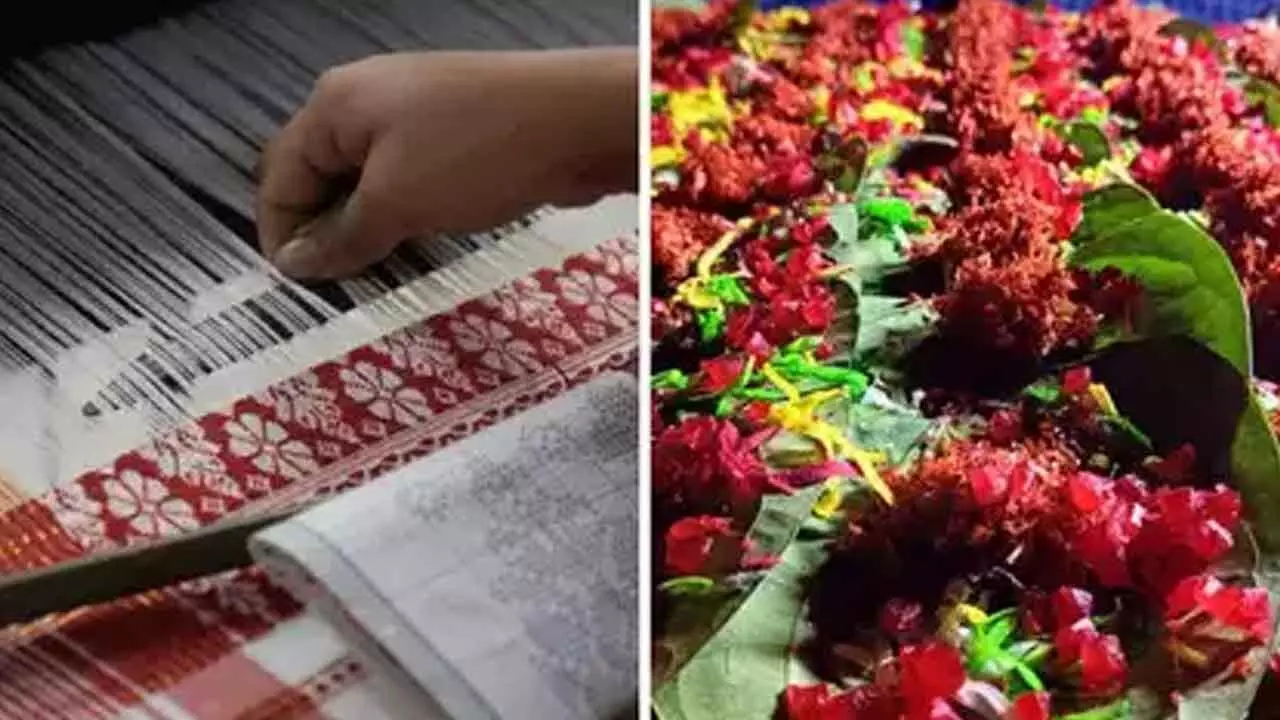Geographical Indications Will Change The Dynamics Of Tourism In India In The Coming Days
Each product tells a story and espouses the magical uniqueness of the craft that connects them with people
Geographical Indications Will Change The Dynamics Of Tourism In India In The Coming Days

It is a wonderful tribute that two of the 36 villages that were bestowed the ‘best tourism villages’ award for 2024 by the Union Ministry of Tourism commemorating the World Tourism Day on September 27 have been to two Telangana villages-Nirmal and Somasila. Incidentally, two Telangana villages, Pochampally and Chandlapur, figured in the 2023 roll of honours.
This year’s 36 winners have been given the award across eight categories. Selection of the awards is as per the parameters adopted by the United Nations World Tourism Organization (UNWTO).
AP Tourism Department recognised the immense contribution of Balaji Society for promoting tourism through the exquisite Madhavmala wood carvings art and crafts.
These places have crafts, which is a registered geographical indication (GI). Geographical indication is a form of Intellectual Property Rights that links a particular product with a place of origin and the people making it for generations. This is reason enough to attract tourists and countless visitors.
Nirmal is famous for Nirmal Toys. The lightweight toys made from of ponniki wood are a classic example of how art and people connect with the place. Nirmal Art, encompassing a 400-year-old tradition of making soft wood toys and paintings, add to the enchanting beauty of drawing rooms. Nirmal district in Telangana was once famous as a production centre of a diverse variety like cannons and toys. Nirmal Toys received a GI back in 2009 in recognition of their distinctive and unique workmanship.
Madhavamala wood carving is likely to file for the coveted GI tag of unmatched superiority.
Currently, more than 1370 GI applications have been filed for registration and over 630 registered products are in the country. Each product tells a story and espouses the magical uniqueness of the craft, which connects them with people.
This potential of the GI brings out the uniqueness in the products and the people which has immense power to tap tourism as people would be inquisitive and keen to see the crafts and experience firsthand.
For instance, if you visit Darjeeling, you are taken for a detour to the 100 plus tea estates to show you how tea is grown in the altitudes, how the leaves are plucked and then processed to get one of the finest teas in the world. This has really increased footfalls in Darjeeling as an added attraction for tourists.
It is likewise with Goa that boasts of feni; Agra has durries and leatherware, while Mysore has 11 GI products like Mysore silk, agarbattis and sandalwood, which the tourists buy and thereby promote rural entrepreneurship.
Soon, we shall see many YouTubers and bloggers opening channels on GI tourism to take you through the product from the raw material to the finished goods, while also elaborating the specialty of the local GI products.
Now that year on year the villages will come to the spotlight and will be recognised as tourism spots, this is a welcome step to promote GI tourism and thus boost rural entrepreneurship.
Meanwhile, this is just a beginning of the journey. A bigger role must be played by the public and private sector and help turn such villages into world-class tourist spots. For any tourism to take-off, the basic ingredients will be approachability by road, rail and air. This makes it mandatory that the onus is on the authorities to put in place the required infrastructure apart from making available all basic amenities. Once these are assured, GI tourism will hit a new high. This kind of tourism will not only spur economic growth but also bring about a welcome connect between people, places and products.
We have been noticing and both the state and central governments are now recognising GIs and promoting them in India and abroad like never before. This is a great sign as the handicrafts sector provides the second largest employment after agriculture. The export potential is tremendous.
The beauty of GI products is that no two products are the same and therefore don’t compete with each other.
I would like to see the TG government identifying these GI tourist spots and villages where the crafts are registered and practiced and thereafter design a GI Tourism circuit to operate with a PPP model. It should build the necessary infra and logistics services to make them a must visit place in a tourist’s bucket list.
(The writer is Head (IPR & Legal) LCGC Resolute Group and founder IPRAS)

